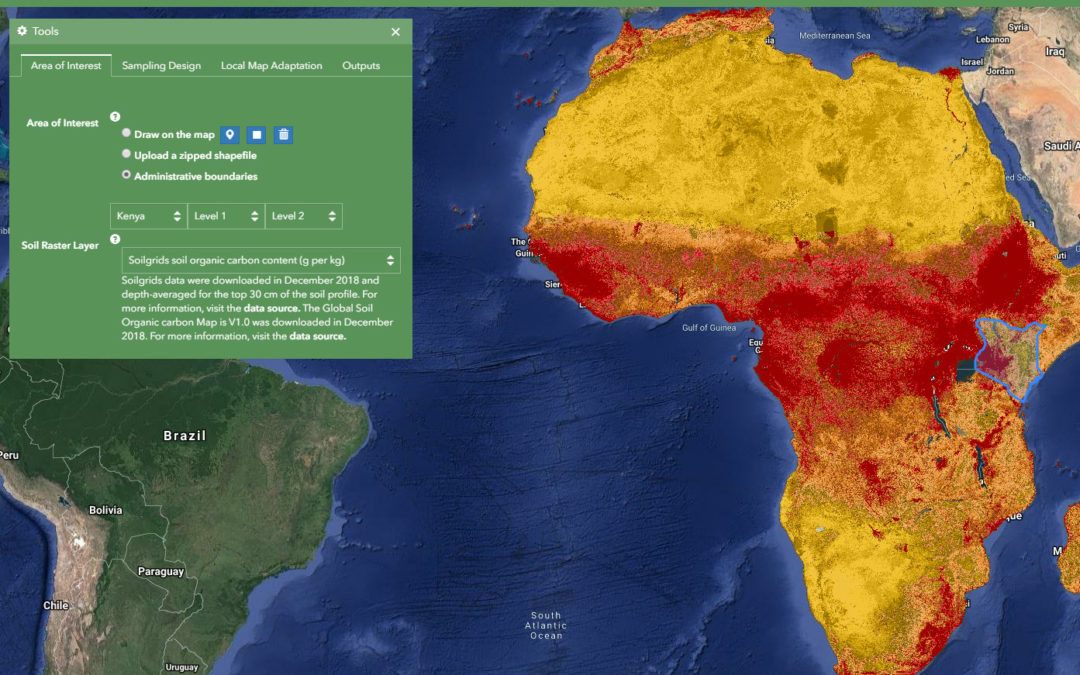Simplifying Soil Data Management in Sub-Saharan Africa

Main interface of the Global Soil Data Manager – Sub-Saharan Africa.
The idea of visualizing soil data at a glance electronically is exciting to many actors in agriculture and land-use planning. Previously, soil characterization required traveling to the field to collect soil samples and sending them to the lab for analysis. Digital maps, however, save the time (travel, carry soils samples to the lab and wait for results) before making crucial site-specific decisions.
In the last couple of years, the world of science has witnessed several global digital soil maps developed and published. The International Soil Reference and Information Centre (ISRIC) and Food and Agriculture Organization (FAO) are examples of organizations that have invested in this initiative with maps of relatively high resolutions of about 250 meters.
These developments have played a crucial part in saving not only researchers’ time but also resources when it comes to gathering data. In addition, data generated from these maps is useful in informing decision-making by actors in the agricultural sector at a country level. Consequently, many people see these maps and assume they can use the same data to address various problems without going out to collect soil samples.
Whilst these maps may provide general data for a wider area, this may not be the case when it comes to guiding farmers in small areas or specific locations like a watershed area. In such cases, this data may not be adequate and for better accuracy, further testing on the soil would be required.
It is with this challenge in mind that scientists at the Swedish University of Agricultural Sciences (SLU), Department of Soil and Environment, in collaboration with colleagues from the International Center for Tropical Agriculture (CIAT), Agroecosystems and Sustainable Landscapes (ASL) Research Area, developed the Global Soil Data Manager – Sub-Saharan Africa.
“Large-scale digital soil maps are often spatially detailed but not always accurate. It is important to evaluate maps before use and, if needed, improve the accuracy by using local soil data. We have developed downscaling algorithms to make these maps good enough. The aim of this technology is to locally adapt global digital soil maps.”
Mats Söderström from SLU
This development was informed by the evaluation of such data for national fertilizer recommendations in a case study in Rwanda and for the development of soil organic carbon baselines for Land Degradation Neutrality (LDN) in Otjozondjupa, Namibia. In their analysis, they found that this is not always the case, hence the need to evaluate the accuracy of map products before local use and, if not judged accurate enough for the intended application, to downscale the data by use of local samples.
“The digital maps can be used to guide soil sampling campaigns, and we have developed algorithms that build upon existing, open-access global soil datasets, both for soil sampling and downscaling by users’ own soil data, and make the maps more precise at a specific location.”
John Mutua from CIAT
The project took off almost a year ago in mid-2018. The technology is based on open-source software and is set for completion by the end of November 2019. Open-source software comes at no cost and is continually developed and updated by the global community. Although it is an opportunity for developers to get some feedback, it also comes without technical support and hence places the development at risk.
Cognizant of this, the team is continually working to ensure all backups are up to date and safeguarded. The source code is available to anyone. Similar modules have been developed for Sweden and proved useful to many users.
“This is a smart platform that we can continue to develop, to cater to specific problems. Fortunately, we have funds for another year but, after that, we will need to look for additional funding.”
Kristin Piikki from SLU
The successful project partnership between CIAT and SLU has been ongoing for the last five years.
“This is an example of how we can combine outcomes from big data and local data to inform local decisions,” Mats Söderström says in conclusion.
December 4, 2019
CGIAR-CSI





